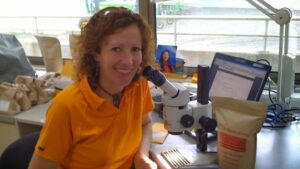After more than 25 years in the canola seed industry, I have observed firsthand how contra season production has become a crucial element of industry success. With hybrid canola being one of the most profitable crops for producers, and the biggest, most competitive crop in the Canadian seed market, the ability to advance material quickly and get new technology into the hands of farmers faster is essential for remaining competitive and meeting customer expectations.

One of the challenges to this is a regulatory system which has not kept pace with technology development and is overburdened and in many ways inefficient. If industry is to be successful in meeting producer needs to address today’s environmental, food nutrition and food security challenges, regulatory innovation and capacity must keep pace. The current regulatory environment, both domestically in many countries and internationally, is fragmented, with poor information sharing and old systems.
The price paid for this is time and capital, two critical ingredients in crop breeding and development. Relative contra season production in South America, regulatory challenges with importing and exporting seed and seed certification can result in costly delays and expensive failures.
The Canadian Food Inspection Agency, which has regulatory authority over much of the seed industry, has initiated a Seed Regulatory Modernization engagement with the seed sector. There are high hopes for transformational change to come out of this process to make the seed system more efficient and resilient, better able to keep pace with increasing scale and scope of the sector.
We have all witnessed how difficult and slow domestic regulatory modernization can be. Creating change to international regulatory systems is even more complicated, but just as critical considering the global nature of plant breeding and seed production.
The importance of contra season production and global seed trade cannot be overstated. Breeders rely on contra season nurseries to cut field screening time in half, this has become a mainstream reliance for private and public breeding programs in most crops. Commercial seed supply in crops like canola, corn and some special crops rely heavily on the contra season to fast-track new technology to market and to recover regular season production shortfalls.
Bringing new seed technology to market is highly dependent on the contra season and regulatory system challenges increase cost and time, robbing resources from breeding and development and slowing the introduction of important seed innovations.
It’s a critical time in the world for the solutions plant breeding and gene editing can bring to address the environmental, food nutrition and food security challenges we are presented with. Regulatory modernization can’t happen fast enough; it’s overdue and a critical step for industry and government to take. Leadership and focus in this area by national, regional and international seed associations is needed.
Individual seed companies need to step up and engage, too. Industry needs to be proactive with a sincere ask: how can we help? Dialogue with regulators is necessary to identify gaps, recognize challenges and consider solutions. The seed sector needs to do the hard work of getting aligned both internally and externally with ag industry stakeholders.
This alignment is important to create critical mass and the clear, coordinated messaging necessary to resonate with regulators. This will help ensure the contra season is the fast track, cost effective solution it is capable of being. There needs to be clearer and more transparent regulations for importing and exporting seeds. There needs to be greater international coordination between regulatory bodies to ensure seed production standards and movement is consistent across different regions.
This will help prevent confusion and uncertainty among regulators and seed producers and will help ensure the movement of seed is properly regulated to address the risk of pest and disease spread.
The good news is there is work being done and important progress being made in some areas. The Seed Association of the Americas along with national seed associations like ANPROS, Argentina Seed Association, American Seed Trade Association (ASTA) and Seeds Canada are working with regulators on international and bilateral solutions.
Two important initiatives include the adoption of electronic phytosanitary certificates (e-phytos) and the implementation of a systems approach for regulation of international seed movement. Both initiatives have the potential to significantly reduce time, cost and complexity of international seed movement.
The current process of issuing phytosanitary certificates is time-consuming and costly, for both seed companies and regulators. Physical certificates take time to print and issue, errors take time and are hard to correct, certificates sometimes get lost, and all of this leads to delays, increased production risk and cost. The adoption of digital e-phytos is a great efficiency step; by transitioning to an electronic system, regulators will free up much-needed capacity and seed companies will improve shipping times and reduce cost.












